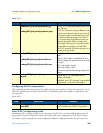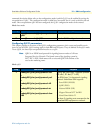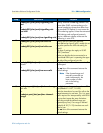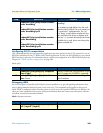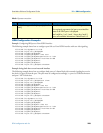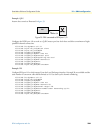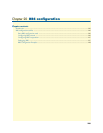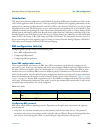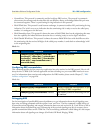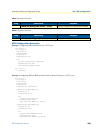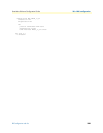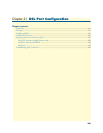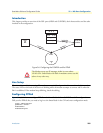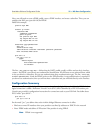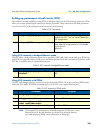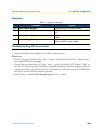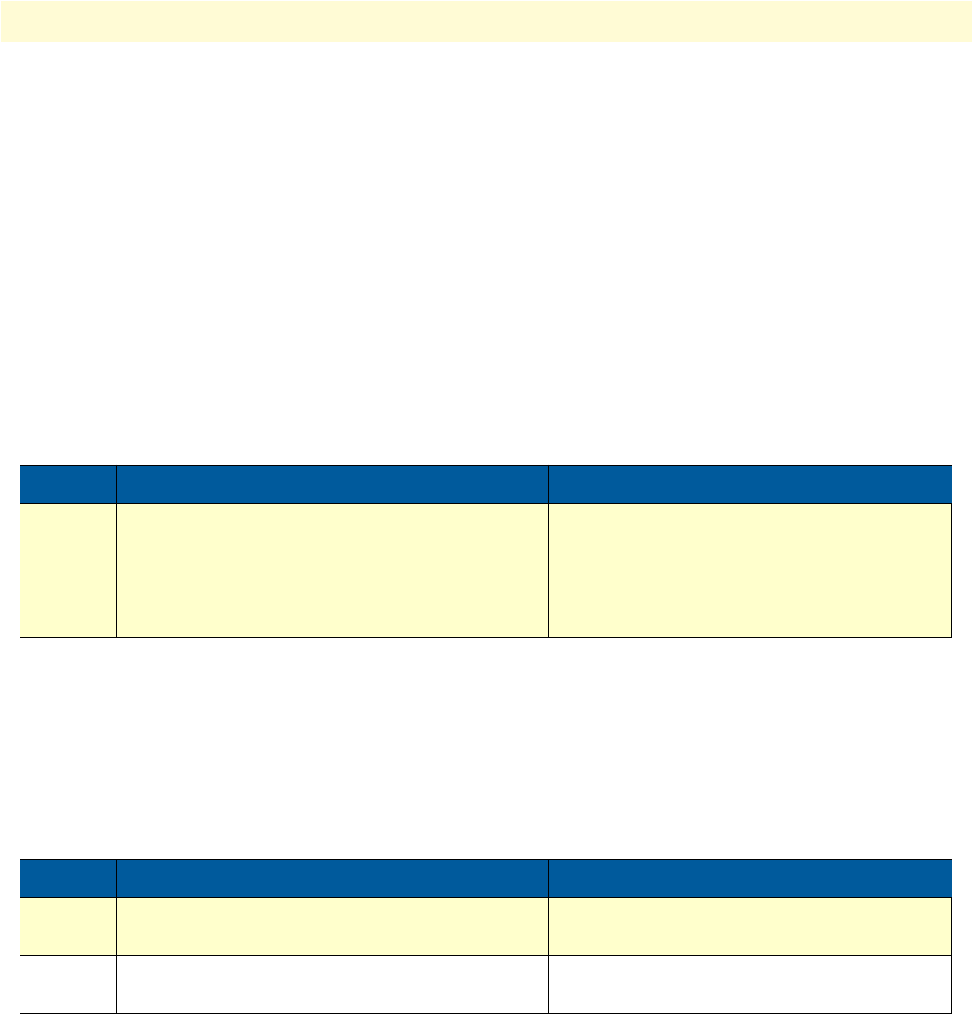
RBS configuration task list 227
SmartWare Software Configuration Guide 20 • RBS configuration
• Ground Start: This protocol is commonly used for local loop PBX services. The protocol is asymmetric
what means, the exchange and the subscriber side are different. Always an Exchange/Subscriber pair must
be connected together. There is a provisioning for ring indication in this protocol.
• E&M Wink Start: This protocol is used between exchanges, is symmetric and has NO provisioning for ring
indication. The ‘wink’ serves as an indication that the terminating side is ready to receive the called party
number, it is analogous to the dial tone.
• E&M Immediate Start: This protocol is almost the same as E&M Wink Start but the originating side must
have the capability for inband dial tone detection due to a missing ‘ready to receive digits’ indication.
• E&M Double Wink Start: This protocol is almost the same as E&M Wink Start with the difference after
the terminating side has received all digits of the called party number, it sends back an acknowledge ‘wink’
to the originating side.
Mode: rbs
Configuring RBS encapsulation
This command specifies the next protocol or application has to be attached to the RBS protocol. Here it will
always be the CC-RBS (Call Control) application and also a binding to a pre-created RBS interface is neces-
sary. For information about creation and configuration of a RBS interface please consult Chapter 37, “RBS
interface configuration” on page 426.
Mode: rbs
Debugging RBS
For the investigation of possible RBS protocol problems or to get information about the call signaling state,
there exist two debug commands with the options ‘event’ and ‘error’. The first command is called ‘debug cas’
(Channel Associated Signaling) and outputs information about sent and received A, B, C and D bits as well as
information about the debouncing state. Debouncing of the received signaling state bits is necessary due to
possible transmission failures on the TDM line. The second debug command is called ‘debug rbs’ and outputs
information about call signaling state changes (On-Hook, Off-Hook, Ringing, Wink).
Step Command Purpose
1
node(rbs)]#[no] protocol {loop-start
{exchange | subscriber} | ground-start
{exchange | subscriber} | eam-double-
wink-start | eam-immediate-start |
eam-wink-start}
Selects the RBS protocol.
Step Command Purpose
1
node(rbs)]#[no] encapsulation cc-rbs Enables/Disables the next application or pro-
tocol. Only CC-RBS is supported.
2
node(rbs)]#[no] bind interface interface Bind the RBS protocol to an existing call con-
trol interface.



